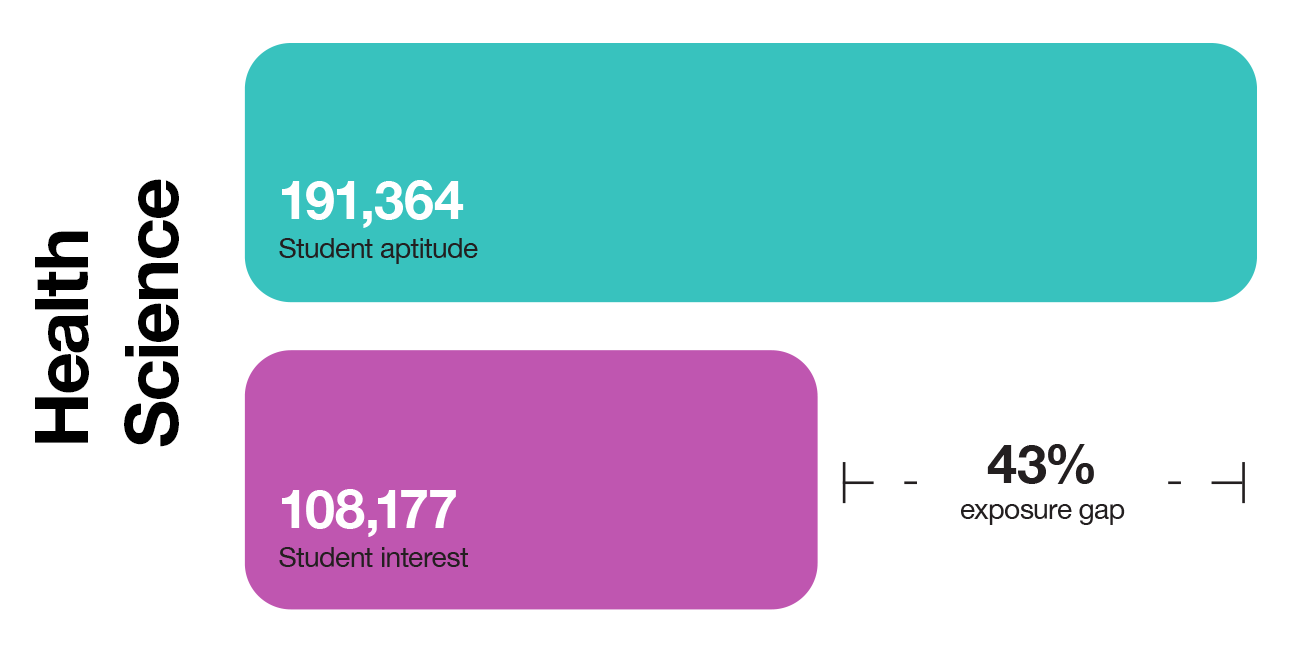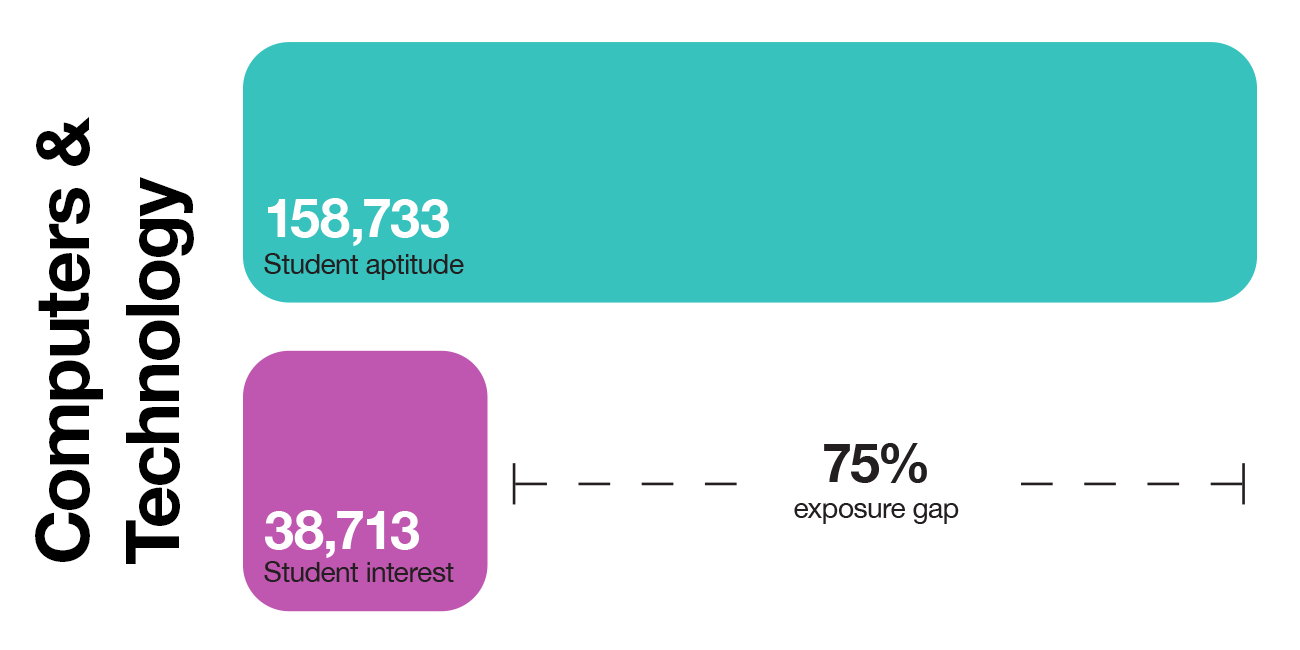Unleashing Your Potential in High-Demand Industries
Bridging the Gap

As you navigate through high school and ponder your future, there’s one crucial aspect to consider: skill gaps. Understanding what they are and how to bridge them can make all the difference in your career path. So, let’s dive in and explore how you can unleash your potential and pave the way for success in high-demand industries.
What Are Skill Gaps?
In today's ever-changing job market, skill gaps are like puzzles waiting to be solved. Picture this: Employers are searching for candidates with the perfect match of skills, while job seekers are eager to showcase their abilities. But here's the twist—the skills in demand today might not be the same tomorrow. That's where the adventure begins!
Think of skill gaps as opportunities to level up in your career journey. Industries are like fast-moving roller coasters, with twists and turns that demand new skills and expertise. By staying ahead of the curve and constantly upgrading your skill set, you're not just boosting your chances of landing that dream job; you're also setting yourself up for a thrilling ride filled with endless possibilities and exciting challenges. So, embrace the quest for new skills, and get ready to conquer the ever-changing landscape of the job market!
As you navigate through high school and ponder your future, there’s one crucial aspect to consider: skill gaps. Understanding what they are and how to bridge them can make all the difference in your career path. So, let’s dive in and explore how you can unleash your potential and pave the way for success in high-demand industries.
Student Interest vs Student Aptitude
A YouScience survey revealed shocking feelings and takeaways students had toward their high school experiences.
- 75% reported they felt “moderately, slightly, or not at all prepared” for what might come next after high school.
- 62% felt that high school should prepare them for future careers
- 57% reported five or fewer conversations with teachers or counselors about opportunities following graduation
- 80% felt they “would have been more engaged in their learning if they better understood their own aptitudes and potential career opportunities.”
Students have the potential to fill the skill gap the US has experienced but their is a discrepancy between student aptitude and student interest.This discrepancy has led to students not fully engaging into fields they could be successful in.


Identify Your Skills and Interests
The first step in bridging skill gaps is to identify your own skills and interests. What are you passionate about? What are you naturally good at? Take some time to reflect on your strengths and areas for growth. Consider your hobbies, extracurricular activities, and academic subjects that pique your interest. Understanding your skills and interests will help you align them with high-demand industries and emerging job roles.
- Self-Reflection: Take some time to think about what activities make you feel excited and engaged. Consider your hobbies, extracurricular activities, and even the subjects you enjoy in school. Reflect on moments when you felt proud of your accomplishments or when you received positive feedback from others. These moments can provide valuable insights into your natural strengths and interests.
- Exploration: Don't be afraid to try new things! Participate in different clubs, volunteer opportunities, or part-time jobs to explore various interests and gain new experiences. Attend career fairs, workshops, or seminars to learn about different industries and job roles. Engaging in diverse activities allows you to discover what you're passionate about and what skills you naturally excel in.
- Feedback from Others: Seek feedback from teachers, mentors, friends, and family members. They can offer valuable perspectives on your strengths and areas for growth that you may not have considered. Ask them what they think your strengths are and where they see you thriving. Their insights can help you gain a deeper understanding of your skills and interests and guide you in the right direction as you explore potential career paths.
Explore In-Demand Industries
Once you have a clear understanding of your skills and interests, it’s time to explore high-demand industries. Keep an eye on trends and projections for future job growth. Industries like technology, healthcare, renewable energy, and cybersecurity are booming and offer a plethora of opportunities for those with the right skills. Research different job roles within these industries and identify the skills needed to excel in them.
1. Virtual Internships and Job Shadowing: Many companies offer virtual internships or job shadowing programs for high school students. These opportunities allow you to explore different industries from the comfort of your home. Whether it's spending a day virtually shadowing a professional or participating in a short-term internship, these experiences provide valuable insights into the day-to-day workings of various industries.
2. Industry-specific Clubs and Organizations: Joining clubs or organizations related to specific industries can be a great way to immerse yourself in a particular field. Whether it's joining a coding club, a healthcare-focused organization, or a renewable energy group, you'll have the chance to engage with like-minded peers, attend industry-related events, and gain hands-on experience through projects and activities.
3. Online Courses and Workshops: Take advantage of online courses and workshops to explore in-demand industries at your own pace. Platforms like Coursera, Udemy, and Khan Academy offer a wide range of courses across various fields, from computer science to healthcare to sustainability. These courses allow you to delve into topics of interest, learn new skills, and gain valuable knowledge that can help you make informed decisions about your future career path.
Develop In-Demand Skills
Now that you’ve identified the skills required in your desired industry, it’s time to develop them. Fortunately, there are numerous resources available to help you upskill and stay competitive. Online courses, certification programs, and experiential learning opportunities can provide you with the knowledge and hands-on experience you need to succeed. Platforms like Coursera, Udemy, and LinkedIn Learning offer a wide range of courses across various industries.
Take Action: Start Bridging Your Skill Gaps Today
Now that you have the knowledge and resources at your fingertips, it’s time to take action. Start by identifying your skills and interests, exploring high-demand industries, and investing in your skill development. Remember, your journey doesn’t end after high school; it’s just the beginning of a lifelong pursuit of learning and growth.
Are you ready to unleash your potential and embark on a rewarding career journey? The future is yours to shape, so seize the opportunity and bridge those skill gaps!
